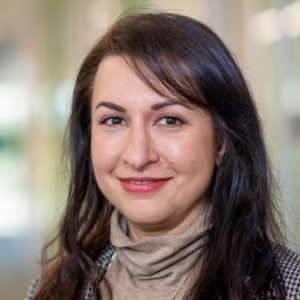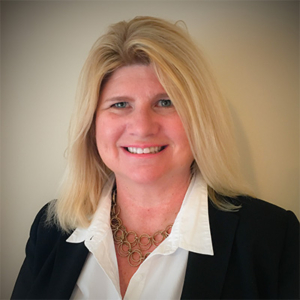Connect with Us
602 Park Point Drive, Suite 225, Golden, CO 80401 – +1 303.495.2073
© 2025 Medical Affairs Professional Society (MAPS). All Rights Reserved Worldwide.
The MAPS External Education Focus Area Working Group (FAWG) recently released the resource External Education Standards & Guidance: Best Practices for Medical Affairs resource, which is provided free for all MAPS members and as a paid download for non-members. The resource, which has been almost a year in the making, details comprehensive procedures to guide independent and company-led medical education for Biopharmaceutical and MedTech organizations. Here MAPS speaks with External Education FAWG leaders about this resource and about recent changes and future directions of External Education.



MAPS: The pace of change in Medical Affairs is astounding. What changes have you seen in External Education?
Kirtida: There are two key types of External Education: Independent Medical Education and company-led education. Independent Medical Education involves grants provided by pharmaceutical companies to support independent programs for healthcare providers and other stakeholders with the goal of improving patient outcomes. The programs can increase understanding of a disease state or treatment landscape and can also go beyond knowledge-building to improve systems of care and address barriers to optimal and equitable care. Independent Medical Education grants management has been the traditional role of External Education teams within Medical Affairs. Company-led medical education is similar in fundamental principles of Medical Education but is managed by Medical Affairs associates within the organization. This relatively new approach of company-led education allows Medical Affairs to leverage faculty and HCP partnerships to create scientifically rigorous programs that accelerate innovation and safe transition from bench-to-bedside. Company-led education has been common outside the U.S., but for compliance and regulatory reasons, has been slower to gain traction in the U.S. However, during the pandemic, many in-person External Education programs were unable to take place which led to increased digitization. With the rise of virtual engagement, digital engagement, and omnichannel engagement, company-led education has seen exponential growth.
Ivan: A major shift is that the pandemic forced company-led education to enter the 21st century. Before 2020 the delivery was mostly lecture- and slide-based, based on traditional models of education. The remote situation of the pandemic has forced a paradigm shift not only in the channels we use, but also from the content perspective. Building a 4-minute video is different than doing a 30-minute presentation. We live in a fascinating time when it comes to education!
Kirtida: I’ll add that another key change has been increased awareness of health inequity and racial disparities, and how diversity, equity and inclusion impact our educational strategies.
MAPS: Have these changes forced Medical Affairs professionals to update their competencies to keep pace?
Jackie: Absolutely. For the independent Continuing Medical Education (CME) community, there are already well-articulated sets of competencies such as how to plan and execute education programs, how to effectively teach healthcare professionals, faculty training, program administration and measuring outcomes. As Medical Affairs professionals, if we’re going to support CME projects with grants, we need to have many of those same skills and competencies in order to make sure our funding goes to the highest quality programs with the most potential impact. As we were working on our External Education S&G resource, we realized we have an opportunity to articulate some of the additional competencies a Medical Affairs professional needs to have. It’s not just skills in delivering education activities or evaluating education proposals, it’s Compliance/Regulatory frameworks, understanding Performance Measures that influence practice, how to collaborate with internal and external stakeholders, etc. One of the most important competencies for External Education leaders is strategic planning. A clear, up-front strategic plan is critical to the success of an External Education program. Many people have the initial instinct to start with an education tactic instead of starting with a strategy. For example, they might plan to support a satellite symposium or a webinar series. However, instead of starting with an education format, Medical Affairs teams need to start by first articulating what they are trying to accomplish. Strategic thinking starts with the envisioning the “end in mind.” For example, maybe the strategic goal is to improve the rate of early and accurate diagnosis for a patient subset within a disease. Then the team should map out knowledge gaps and individual or system behaviors that need to change. And then the team can select or plan external education programs for healthcare professionals, patients, or other stakeholders aimed at closing those gaps in practice and achieving the goal.
MAPS: Change doesn’t come without challenge…
Ivan: Yes, that is true. The pharmaceutical industry has been scrutinized for decades for its role in External Education. However, these concerns led to the development of the current extensive regulations and Codes of Practice that rigorously ensure compliance, transparency, and the appropriateness of our role. The new S&G Resource has an entire section that covers governance, policies and monitoring practices and should be really helpful to our MAPS members.
Kirtida: When we support Independent Medical Education, we do not have any influence over the educational content. All we are doing is receiving requests for funding and approving grants to Independent Medical Education activities. Even in company-led education, when we are involved in content development, that content is still completely fair-balanced, non-promotional, and scientifically sound. In both types, external education is always about making patient care better.
MAPS: Your S&G sounds like a watershed moment for External Education.
Kirtida: Our S&G resource provides an important tool for Medical Affairs professionals, like a dictionary or lexicon that everyone can use to speak with one voice. Our comprehensive S&G document will provide consistency in language and a cohesive, standardized approach to External Education globally.
The Innovate article series highlights the ideas of Medical Affairs thought leaders from across the biopharmaceutical and MedTech industries. To submit your article for consideration, please contact MAPS Communications Director, Garth Sundem.
602 Park Point Drive, Suite 225, Golden, CO 80401 – +1 303.495.2073
© 2025 Medical Affairs Professional Society (MAPS). All Rights Reserved Worldwide.

 Partnering for Today and Tomorrow – Episode 15: Health Economics and Outcomes...
Partnering for Today and Tomorrow – Episode 15: Health Economics and Outcomes...